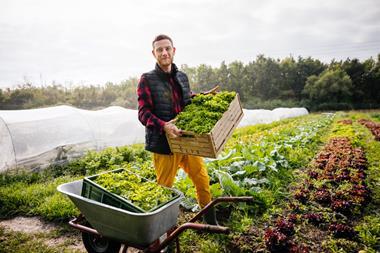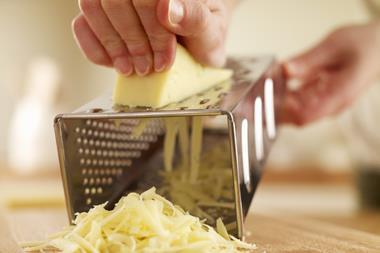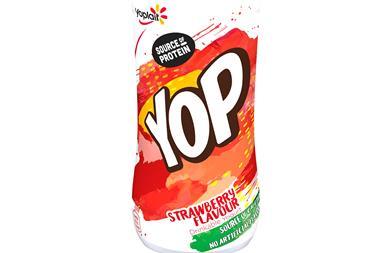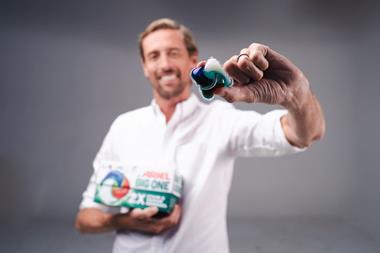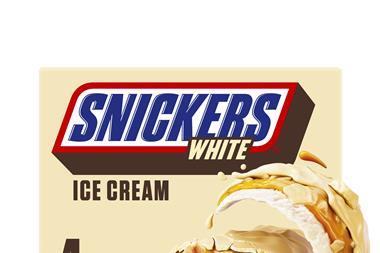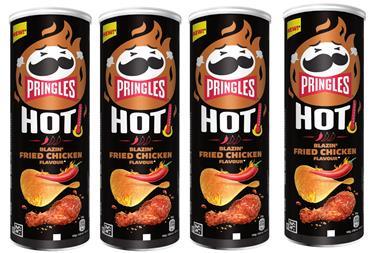Milk remains one of the biggest footfall drivers
in c-stores
Milk is one of those few items that really gets people running to the shops. Cries of ‘Oh no, we’ve run out of milk’ are invariably followed by a dash for the nearest store. Indeed, Him Convenience Tracking Programme 2007 data reveals that milk is the second most purchased item in c-stores, after news.
The research revealed that 20% of shoppers intended to buy milk when they went into a c-store, but only 19% made a purchase - with out of stock cited as the main reason for their failure. Him reports that as milk is bought throughout the day - and not just in the morning - it is imperative that the fixture is well stocked at all times. And, interestingly, it’s not just bought to put in tea or pour on cereals. It is viewed by many as a soft drink alternative, especially by ‘white van man’ and children.
Lately, one of the big issues for milk has been price hikes. These are due to a number of factors: the weather/lower yields, rising fuel prices and the simple mathematics of supply and demand. All this adds up to higher prices.
Spar retailer Phillip Seymour says his customers have mentioned the price increases. “Luckily, they are aware of the issues and seem to realise that it’s not just me trying to make more money,” he says.
Phillip sells more than £800-worth of milk a week at his store in Machen, Caerphilly. He gets deliveries six days a week - three from Spar and three from Golden Vale - and so says keeping up with demand isn’t a problem. “We sell 2ltrs for £1.45; last year it was about £1.19, but we are not making any more money on it,” he says. “We try to remain competitive - not with the likes of Tesco but with other convenience retailers. Our nearest competitor is a nearby garage and I know we are cheaper than them.”
Meanwhile, Robert Foster of Vivo Randalstown in Northern Ireland has so much competition that he regularly puts milk on special offer and as a result doubles sales. “We started selling two 2ltrs for £1.80, but had to put the price up to £2. My customers understand because other shops nearby are selling 1ltr for £1.29. We get milk delivered six days a week from Hendersons so have no problems with supplies.”
Of course, milk is one of the few categories where own-label products outsell brands. However, there are branded milks available. Cravendale milk relaunched last year, backed by an £8m spend. According to IRI data, Cravendale accounts for 3.7% of milk bought in the UK, and its sales are growing at 33% year on year. As such, it is the UK’s number-one milk brand and by the end of last year its value had topped £105m.
Senior brand manager Louise Barton says Cravendale’s key messages of filtration and purity have brought new consumers to the brand. “Cravendale milk isn’t just pasteurised; it’s filtered to make it purer for a fresher taste. This process removes the bacteria that can turn milk sour and means Cravendale lasts seven days once opened and 25 days unopened.”
The latest addition to the Cravendale line-up is a 284ml size for consumers on the move. It comes in three varieties: semi-skimmed; milk plus strawberry; and milk plus banana. The latter two are flavoured with real fruit extracts.
Robert Wiseman Dairies now produces one in every four litres of fresh liquid milk in the UK, every day. The company’s sales and marketing director Sandy Wilkie puts one of the reasons for this growth down to its focus on the convenience sector: “The growth in convenience has given us all the encouragement we need to introduce new products and do what we can to create excitement in the milk cabinet.”
He points to the success of ‘the One’ as an example: “We were first to market with this 1% fat product, more than three years before EU legislation changed to formally recognise the product as milk in January 2008. Consumers loved it from launch and sales volumes have grown by 88.5% since December 2005.
“We also knew that our customers in the convenience sector wanted healthy products to go, which is why we invested in Shock flavoured milks. The opportunity for retailers is to have this product sited in two places - in the dairy chiller as well as in the food-to-go chiller as an alternative to fizzy drinks.”
Furthermore, in a bid to encourage shoppers to consider picking up two milk products instead of one, Wiseman has developed Puriti, a fresh milk with a shelf life of up to three weeks.
Meanwhile, there has been a lot of activity in the branded organic milk market with the launch of Country Life organic and Yeo Valley’s extended shelf-life organic. But whether or not you choose to stock organic milk is probably down to your location and your customer base. According to the Organic Milk Co-operative’s Organic Milk Report 2007, TNS data for 2006 shows that organic milk accounted for just 6% of the major multiples’ liquid sales. However, organic milk accounts for more than 10% of Sainsbury’s milk category sales and one in five pints sold in Waitrose is organic, so it could be worth a try.
Finally, dairy-free is another sub-sector to consider. Alpro soya commercial director John Allaway comments: “With 14.8% penetration, dairy-free is not yet an everyday purchase for most households. But it is beginning to head that way. Greater understanding of the health benefits of soya, improvements in the flavour and range of products, and marketing activity which positions soya as a mainstream food choice, are all contributing to strong growth in dairy-free.”
Milk facts
The dairy category is worth £7.9bn, with milk worth £2.8bn and cream worth £210m
12 million litres of milk are sold in the UK every day
Milk accounts for 4% of total average c-store sales
Sales of fresh flavoured milk have grown by 32% over the past 12 months
The average household buys cream 12 times a year
Source: Dairy Crest Convenience Review 2008/Him/TNS
meet the supplier
Supplier: Yorkshire Provender Company
Background: The Yorkshire Soup Company was established in 2003, but was renamed The Yorkshire Provender Company in 2006. Farming lies at the very root of the company as founders Terry and Belinda Williams both come from farming families - one in North Yorkshire, the other in New South Wales in Australia.
The company was one of the first to create a beetroot soup, and its beetroot, parsnip, ginger & horseradish soup remains the flagship recipe.
Recent launches: Organic soup range - rrp £2.49 for 500g; Cups ‘N’ Go on-the-move single-serve soup range - rrp £1.75 for 285ml.
Distribution: Direct from the company, or through Bespoke Foods in the London region, Stuart’s Foods in the North-east, W4 in the south-west, Dunster’s Farm in the North-west, and Fife Creamery in Scotland.
Cream
According to Key Note, sales of cream were worth £169m in 2006. The company’s Milk & Dairy Products report states that sales had been hit by the success of competing products such as ice cream and ready-to-pour custard. However, it states that the revival in home cooking has encouraged its use as an ingredient. The report continues: “Campaigns such as Bisto Night are encouraging households to eat together at least once a week, which is providing additional opportunities to serve puddings with accompaniments.”
spotlight
Lettuce
Iceberg, Round and Little Gem are the most popular types of lettuce, but other varieties include Cos, Chinese Leaf and continental types. Iceberg and Little Gem are best-sellers.
They come into season at various times of the year: Iceberg from June to October; Little Gem from March to November; Cos May to November; Chinese Leaf April to December; and continental types from May to November. Round is available all year.
Lettuces are short-life products and should be kept chilled at all times. They should appear bright and with full heads. Excessive wetness, slime and yellowing of leaf tips are signs of deterioration.
Handle with care to avoid crushing or bruising, and look for browning, blown packs and excessive wetness as signs of deterioration with prepacks.


















